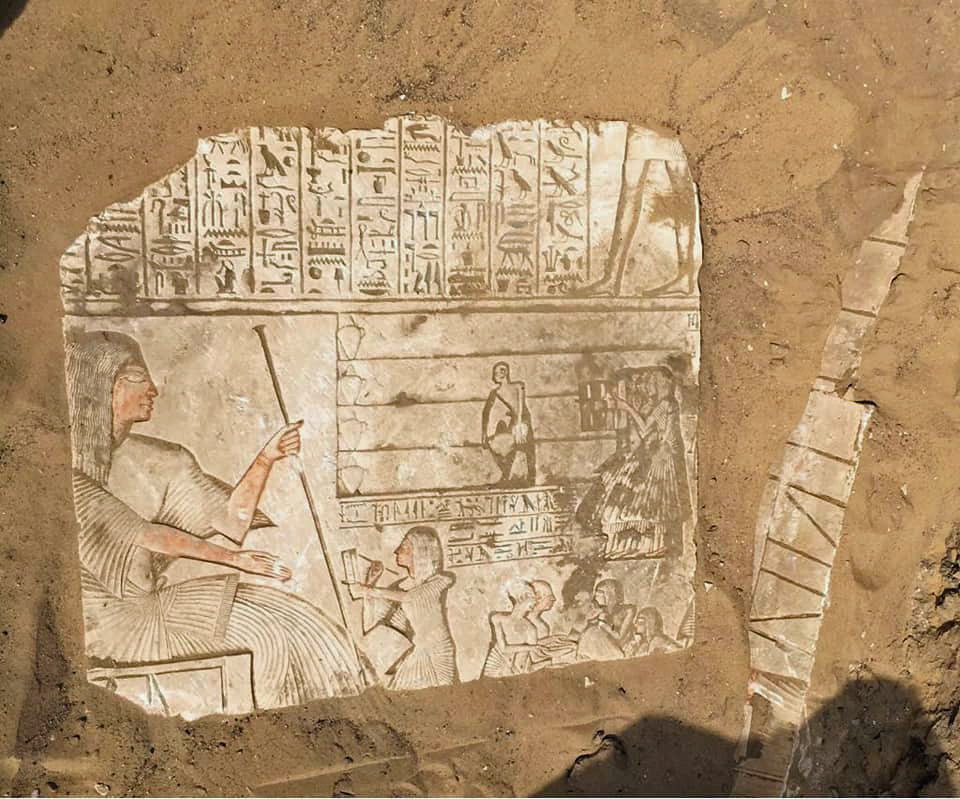Sprawling 3,300-Year-Old Egyptian Tomb Hides Secrets of Ancient War

Archaeologists have discovered the sprawling, 3,300-year-old tomb of an army general named Iwrhya at the ancient Egyptian site of Saqqara.
Hieroglyphic inscriptions found on the tomb walls say that Iwrhya "is a high army General, and High steward of the domain of Amun [and] High steward of the estates of Ramesses II in the domain of Amun," the Egyptian antiquities ministry announced in a statement today (May 8). Amun was an important godin Egypt (revered as the king of gods) around 3,300 years ago.
Iwrhya's career started during the reign of pharaoh Seti I, who ruled Egypt from 1294 B.C. to 1279 B.C., and continued into the reign of pharaoh Ramesses II, which lasted from 1279 B.C. to 1213 B.C., the inscriptions say. [See Photos of the Tomb and Inscriptions at Saqqara]
The tomb contains a number of rooms, including chapels, a forecourt and a room that excavators call the "statue room."
The art found in the statue room portrays the owner's military actions and foreign relations with neighboring countries, according to the statement. These scenes include "mooring boats taking down their loads of Canaanite wine jars," the statement said. The Canaaniteslived in modern-day Israel and Palestine, and were, at times, ruled by the Egyptians.
Additionally, a block "discovered in the sand [that was] probably detached from the northern wall shows quite an exceptional scene of an infantry unit and charioteers crossing a waterway with crocodiles," the statement said. Analysis of that scene suggests the crossing took place somewhere on the eastern border of Egypt, according to the statement.
Excavations are ongoing, and human remains have yet to be found in the tomb. It's possible that the tomb was used to bury multiple family members, such as Iwrhya's son, Yuppa, and grandson, Hatiay — both of whom were mentioned in the inscriptions. It's also possible that Iwrhya may have been of foreign descent, according to the statement.
Sign up for the Live Science daily newsletter now
Get the world’s most fascinating discoveries delivered straight to your inbox.
A team led by Ola El Aguizy, a professor of Egyptology at Cairo University, discovered and excavated the tomb during the 2017-2018 field season. It is located at Saqqara to the south of a pyramid built by a pharaoh named Unas, who reigned more than 4,300 years ago. Saqqara contains a vast amount of archaeological remains that encompass thousands of years of Egyptian history.
Originally published on Live Science.

Owen Jarus is a regular contributor to Live Science who writes about archaeology and humans' past. He has also written for The Independent (UK), The Canadian Press (CP) and The Associated Press (AP), among others. Owen has a bachelor of arts degree from the University of Toronto and a journalism degree from Ryerson University.










